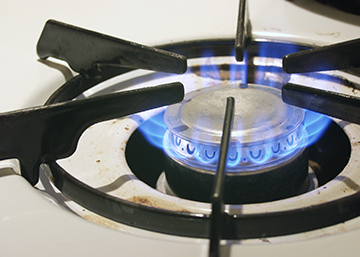
BY ELAINE GOODMAN
Daily Post Correspondent
A program that covers Menlo Park residents’ costs to replace natural gas home appliances with electric models is off to a slow start, leaving the city scrambling to spend a $4.5 million state grant before it expires.
The city is targeting the program to low-income residents of the Belle Haven neighborhood who live in a home they own.
Since the program launched in late August, 11 homeowners have agreed to participate. Appliance installations are underway at two homes.
City Council will receive an update on the electric appliance program on Tuesday.
“All the feedback that I’ve heard from the community is based on, if I electrify my home, I’m going to be having higher electricity bills, higher energy bills altogether,” John McKenna of the city’s Environmental Quality Commission said during a meeting Feb. 19.
And residents worry about not being able to use the electric appliances during a power outage, McKenna added.
According to the city’s website, switching to electric appliances will improve indoor air quality for residents while reducing greenhouse gas emissions in Menlo Park.
“Electric appliances can be more energy-efficient than their gas counterparts, leading to lower monthly energy bills,” the city said in a frequently-asked-questions page. “For instance, heat pumps can be up to three times more efficient than gas furnaces.”
Money to spend
The city is paying for the electric appliance program through a $4.5 million award from the California Energy Commission for community electrification. In September 2023, the city received the first half of the funds — $2.25 million — which must be spent before the CEC will send the second half.
There’s a June 2026 deadline for spending the entire $4.5 million. The city is hoping to spend the first half of the funding by around the middle of this year to leave enough time for spending the second installment.
The city’s Environmental Quality Commission discussed this month other ways to spend the money if participation from Belle Haven residents continues to lag. Those could include using the funds to switch from gas-powered to electric equipment at city facilities, such as the Burgess Pool, the Belle Haven Child Development Center or the Arrillaga Recreation Center.
Another idea was to offer rebates to residents, regardless of income level, for electric heat pump water heater and heat pump heating and cooling systems.
The city is partnering on the electric appliance program with Peninsula Clean Energy as part of PCE’s Home Upgrade Services.
Belle Haven homeowners who want to participate must switch their water heater or space heater from gas to electric. They then have the option to add other electric appliances, such as a clothes dryer or induction stove. But participants can keep some gas appliances if they want to.
In addition to the new appliances, the program provides wiring and upgrades to electrical panels if needed.
Resistance in Belle Haven
Why more Belle Haven residents aren’t participating in the electric appliance program was a topic of discussion for the Environmental Quality Commission during its February meeting.
One issue may be that the program is open to homeowners but not renters. And participation is limited to residents making 80% of the area median income or less. For a family of four, that’s an annual income of $156,650.
Commissioners discussed raising the income limit to 120% of the area median, which works out to $223,900 for a family of four, as a way to increase participation in the appliance program.
One commissioner noted that many Belle Haven residents are Hispanic and may be reluctant to interact with the government at a time when mass deportations are being planned.
Another program requirement is that the resident must be a customer of Peninsula Clean Energy. Some residents aren’t sure if they are or not. Participants also must keep living at the home for five years after the new appliances are installed.
The city is ramping up its outreach to residents about the program. Previous efforts have included distributing flyers and staffing tables at community events. Peninsula Clean Energy has been emailing residents with program details.
This month, the city is mailing postcards to Belle Haven residents and advertising the program on electronic message boards in the neighborhood.

Natural gas is a clean-burning fuel that has made America’s air cleaner, with lower lead, soot and carbon-dioxide emissions compared with coal.
If a voluntary program to take people off of gas won’t work, imagine how difficult it will be to force people to make the switch? This pilot should tell the city council that they’re doing something incredibly unpopular and should leave people alone.
Half or more of Palo Alto’s residents rent. So, the program is tailored to, at most, half of the residents. Of that half, it is available only to those whose income is less than $157,000. This would make an interesting Venn diagram.
How likely is someone with income of approx $150K/year or less to own a home in Palo Alto? Are they going for seniors with fixed income? Or newly minted millionaires via inheritance? Or others… ?
I wonder how many people the City expected to qualify, and what their opportunities otherwise were to upgrade their appliances. I am assuming that the city seeks homeowners who would like to swap but cannot afford it, rather than those who can afford it but prefer gas?
Meanwhile, I wonder if this is the most effective way to accomplish this goal. Other cities, especially those with landlord taxes (which are fairly common when a large proportion of residents rent their homes), incentivize conversions by offering tax credits. Targeting multi-family housing also can make a larger impact with fewer conversions. Just thinking out loud.
TLDR are these results a surprise? Maybe, but should they be?
(Disclaimer: I am both a tenant (in Palo Alto) and a landlord (in San Francisco). And things I say are in my personal capacity of course.)